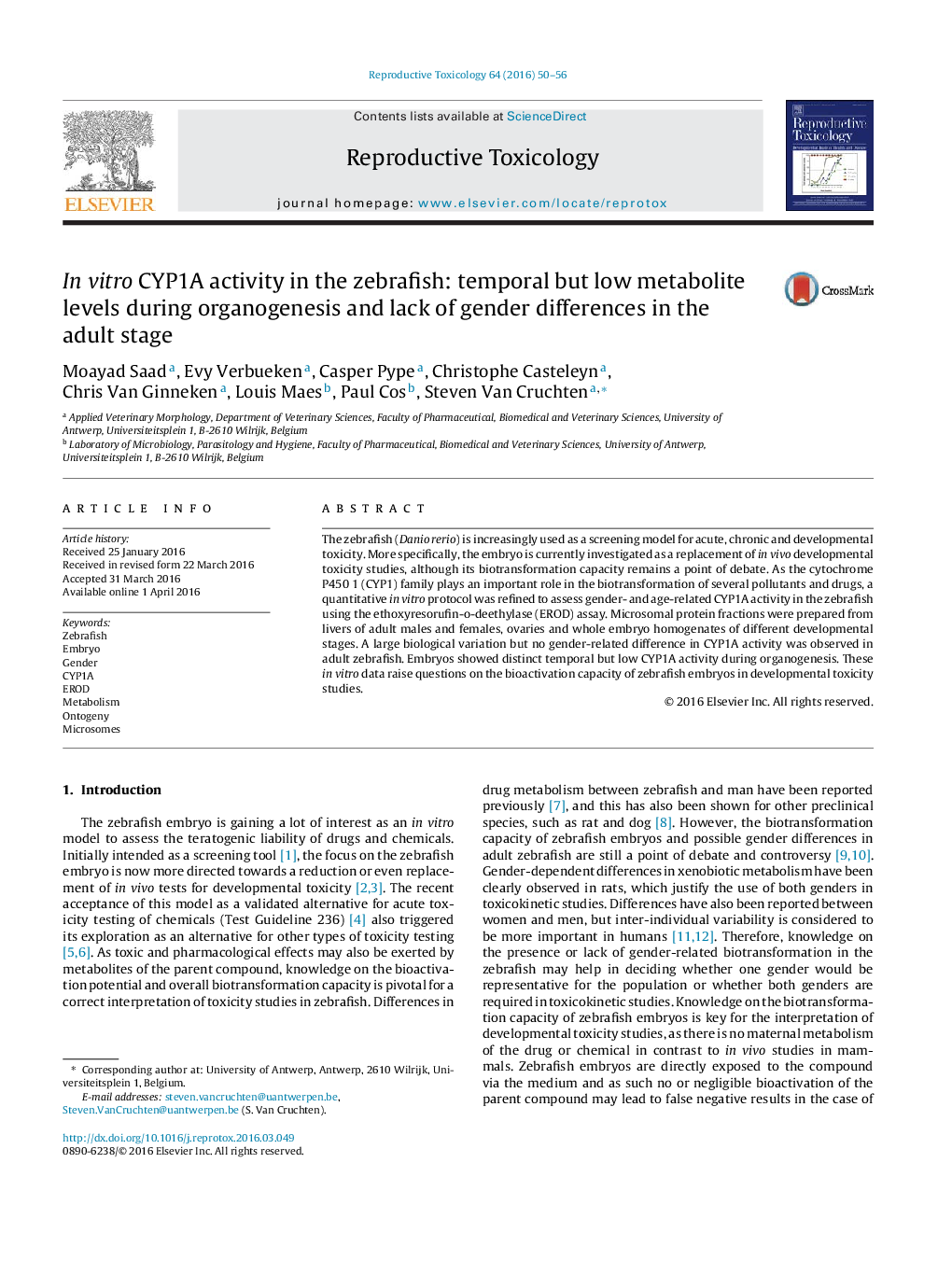| Article ID | Journal | Published Year | Pages | File Type |
|---|---|---|---|---|
| 2593295 | Reproductive Toxicology | 2016 | 7 Pages |
The zebrafish (Danio rerio) is increasingly used as a screening model for acute, chronic and developmental toxicity. More specifically, the embryo is currently investigated as a replacement of in vivo developmental toxicity studies, although its biotransformation capacity remains a point of debate. As the cytochrome P450 1 (CYP1) family plays an important role in the biotransformation of several pollutants and drugs, a quantitative in vitro protocol was refined to assess gender- and age-related CYP1A activity in the zebrafish using the ethoxyresorufin-o-deethylase (EROD) assay. Microsomal protein fractions were prepared from livers of adult males and females, ovaries and whole embryo homogenates of different developmental stages. A large biological variation but no gender-related difference in CYP1A activity was observed in adult zebrafish. Embryos showed distinct temporal but low CYP1A activity during organogenesis. These in vitro data raise questions on the bioactivation capacity of zebrafish embryos in developmental toxicity studies.
